43 light worksheet wavelength frequency and energy
Physics Tutorial: Combination Circuits - Physics Classroom In this case, light bulbs A and B are connected by parallel connections and light bulbs C and D are connected by series connections. This is an example of a combination circuit. When analyzing combination circuits, it is critically important to have a solid understanding of the concepts that pertain to both series circuits and parallel circuits ... Grade 8 science teacher's guide - SlideShare Aug 02, 2015 · This activity was already done in Grade 7. The focus of the activity in Grade 7 was to identify the corresponding frequency and wavelength of the each color of light and the computation of the speed of each of the colors of light. This time the focus is on how energy relates to the frequency of the colors of light.
Application and Practice Questions - Physics Classroom Thus, the total mechanical energy initially is everywhere the same. Whatever total mechanical energy (TME) it has initially, it will maintain throughout the course of its motion. The object begins with 39.2 J of potential energy (PE = m * g * h = 1 kg * 9.8 m/s/s * 4 m = 39.2 J) and no kinetic energy. The total mechanical energy (KE + PE) is 39 ...
Light worksheet wavelength frequency and energy
Digital Object Identifier System This is the web site of the International DOI Foundation (IDF), a not-for-profit membership organization that is the governance and management body for the federation of Registration Agencies providing Digital Object Identifier (DOI) services and registration, and is the registration authority for the ISO standard (ISO 26324) for the DOI system. PHSchool.com Retirement–Prentice Hall–Savvas Learning Company PHSchool.com was retired due to Adobe’s decision to stop supporting Flash in 2020. Please contact Savvas Learning Company for product support. Light - Wikipedia Light or visible light is electromagnetic radiation within the portion of the electromagnetic spectrum that is perceived by the human eye. Visible light is usually defined as having wavelengths in the range of 400–700 nanometres (nm), corresponding to frequencies of 750–420 terahertz, between the infrared (with longer wavelengths) and the ultraviolet (with shorter wavelengths).
Light worksheet wavelength frequency and energy. Physics Tutorial: The Speed of Sound - Physics Classroom Speed = Wavelength • Frequency. Using the symbols v, λ, and f, the equation can be rewritten as. v = f • λ. The above equation is useful for solving mathematical problems related to the speed, frequency and wavelength relationship. However, one important misconception could be conveyed by the equation. Light - Wikipedia Light or visible light is electromagnetic radiation within the portion of the electromagnetic spectrum that is perceived by the human eye. Visible light is usually defined as having wavelengths in the range of 400–700 nanometres (nm), corresponding to frequencies of 750–420 terahertz, between the infrared (with longer wavelengths) and the ultraviolet (with shorter wavelengths). PHSchool.com Retirement–Prentice Hall–Savvas Learning Company PHSchool.com was retired due to Adobe’s decision to stop supporting Flash in 2020. Please contact Savvas Learning Company for product support. Digital Object Identifier System This is the web site of the International DOI Foundation (IDF), a not-for-profit membership organization that is the governance and management body for the federation of Registration Agencies providing Digital Object Identifier (DOI) services and registration, and is the registration authority for the ISO standard (ISO 26324) for the DOI system.


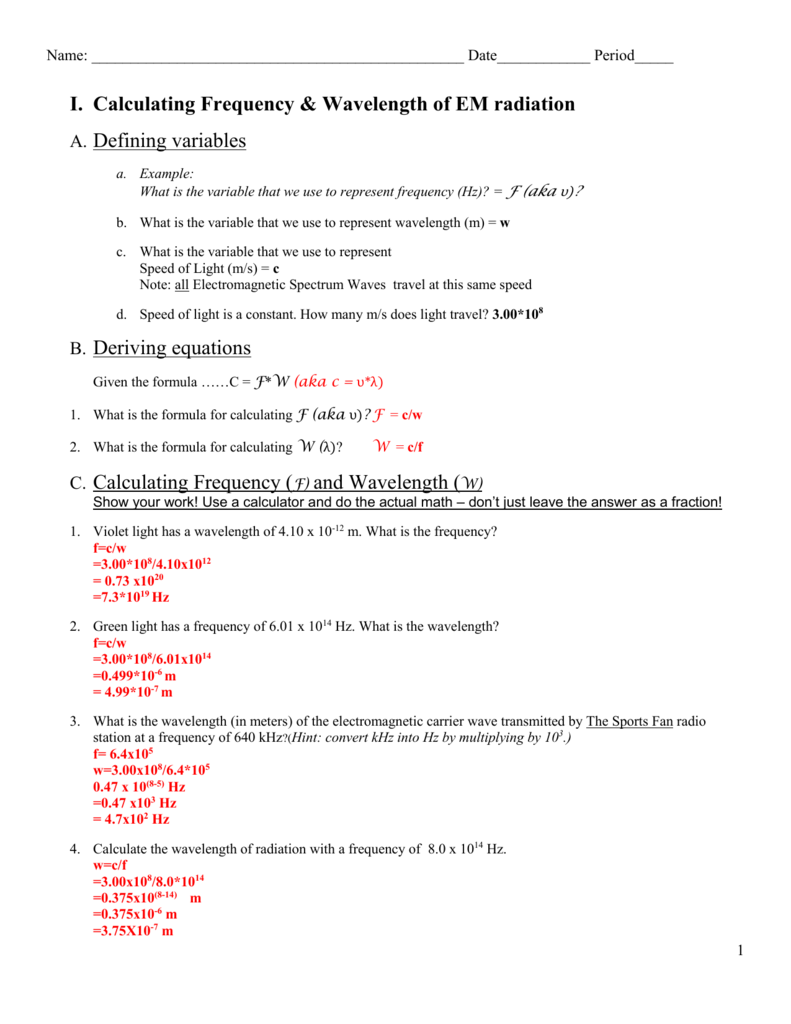
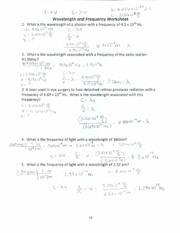

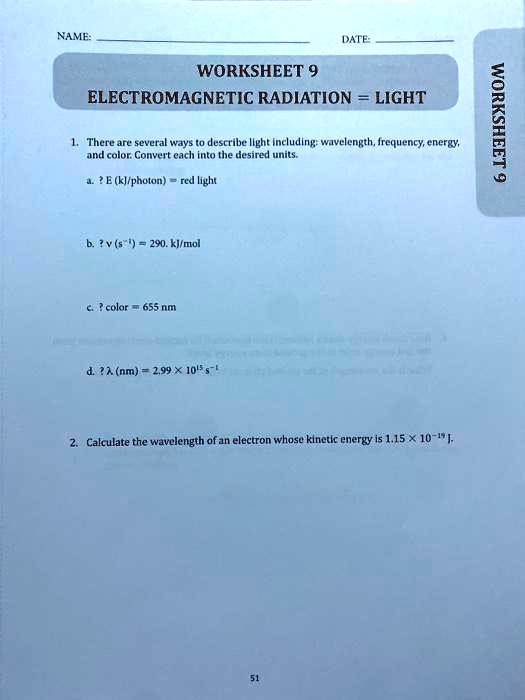
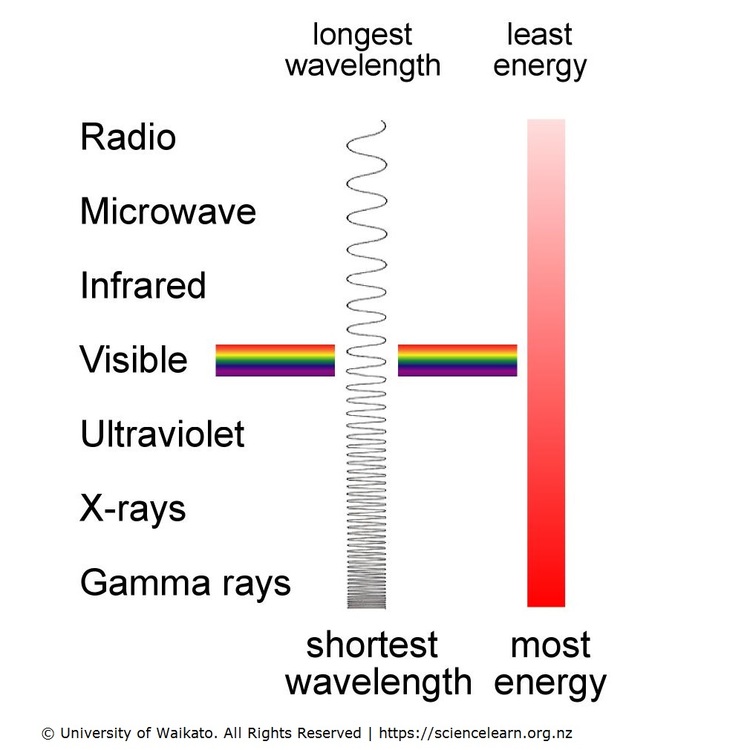


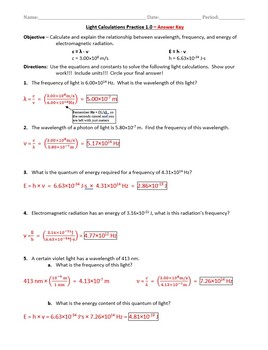
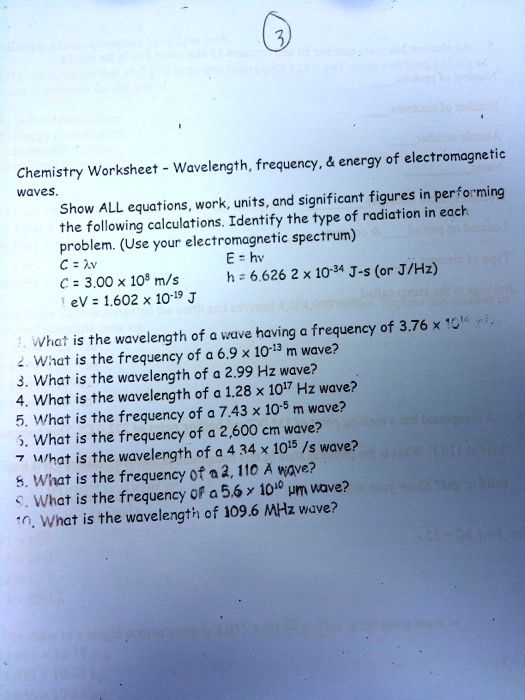


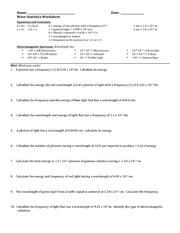




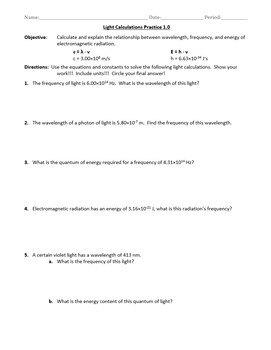


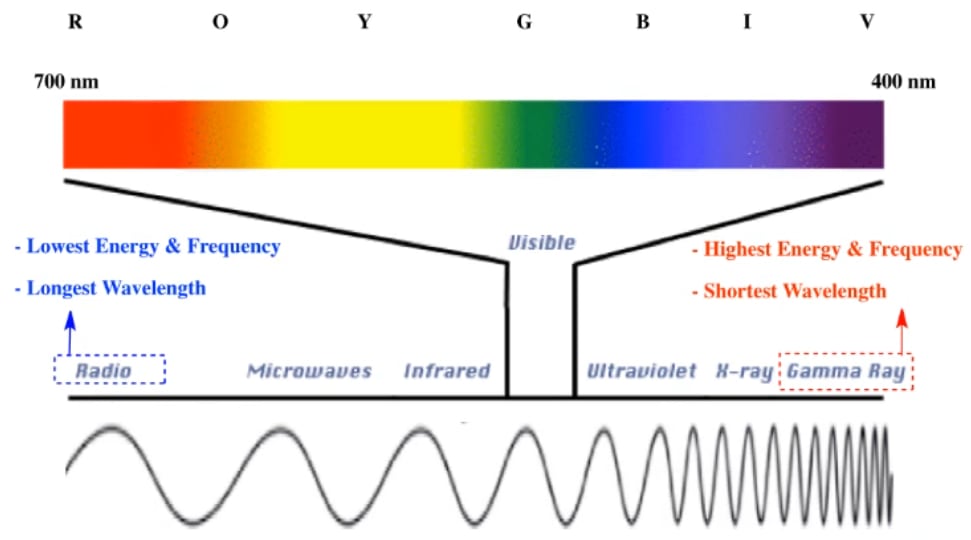


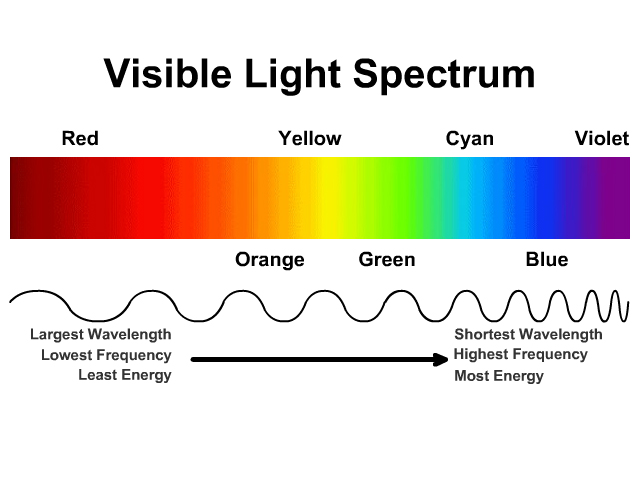
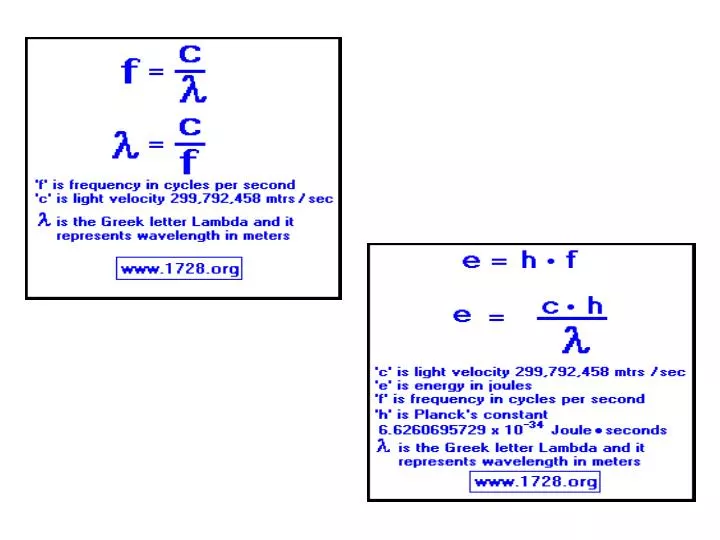

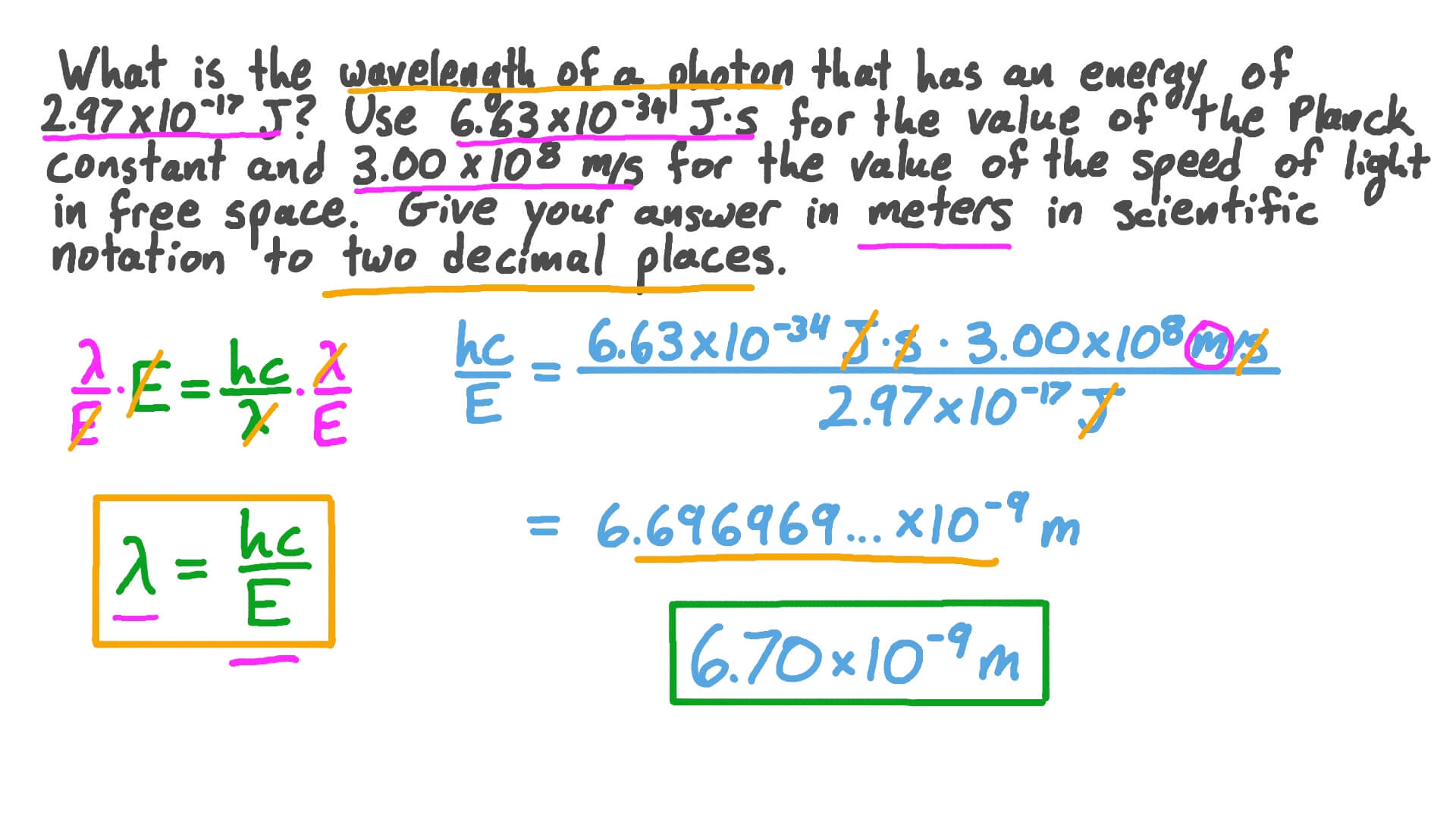



0 Response to "43 light worksheet wavelength frequency and energy"
Post a Comment